Research in phase with corporate challenges
The excellence of the SysChem research cluster goes hand in hand with a strong desire to collaborate on the construction of a long-term research and innovation partnership linked to the major technological challenges of the future and in phase with companies’ concerns.
The expertise that sets SysChem apart in the fields of catalysis, functional polymers and materials, modelling and the chemistry-biology interface will generate profound technological advances that will transform industries , adding value to products and production methods, whilst adapting to new environmental standards .
Biomedical technologies
Sustainable development
Some examples of scientific advances
Conversion of CO2 | Catalysis
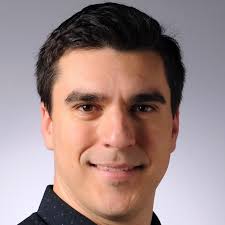
Prof. Joseph Moran
Named one of the world’s most brilliant young researchers by the prestigious magazine Chemical & Engineering News in 2018.
Starting Grant ERC 2015 & Consolidator Grant 2020
Areas of work
Nat. Ecol. Evol. 2020, 4, 534
Nature 2019, 569, 104
Nat. Ecol. Evol. 2018, 2, 1019
Nat. Ecol. Evol. 2017, 1, 1716
Competitive advantages
Applications
Green and biosourced chemistry | Catalysis and industrial processes
Areas of work
Leading laboratory in the field of olefin metathesis. Ligands and catalysts derived from renewable resources.
Nature 2011, 471, 461
Nature 2016, 531, 459
Nature 2017, 80, 542
Science 2019, 352, 369
Competitive advantages
Reduction of the number of steps in complex synthesis with high regio-, diastereo- and/or enantioselectivity.
Robust, effective, easy-to-prepare and easy-to-use catalysts for economical, reliable and practical catalytic systems.
Applications

Prof. Amir Hoveyda
Winner of the Make Our Planet Great Again call for researchers on the initiative of President Emmanuel Macron.
XiMo, AG startup co-founder with Richard Schrock (Chemistry Nobel prize 2005).
Nanomedicine and nanotechnology
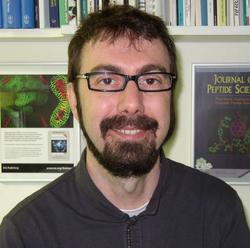
Alberto Bianco
“Highly cited researchers” 2015, among the 200 most influential chemical researchers in the world.
CNRS Silver Medal 2019
Areas of work
Angew. Chem. Int. Ed. 2020, 59, 14034
Angew. Chem. Int. Ed. 2020, 59, 1542
Nanoscale Hor. 2020, 5, 1240
Chem. Eur. J. 2019, 25, 13218
Chem. Eur. J. 2015, 21, 14886
Chem. Eur. J. 2011, 17, 3222
Competitive advantages
Combination of the properties of functional molecules (therapy, targeting, imaging) with those of the materials (hyperthermia, imaging).
Modulation of toxicity by means of appropriate chemical functionalisation
Biodegradability
Applications
Cancer therapy and diagnostics.
Surface coatings (development of broad-spectrum antiviral and antimicrobial surfaces).
Multifunctional filtration membranes
Therapeutic and diagnostic tools | New fluorescent probes
Areas of work
Fluorescent molecular probes for the selective detection of biomolecular targets. Fluorescent nanoparticles providing some of the brightest nanomaterials recorded to date, delivering ultrasensitive detection of targets.
A brighter fluorescent coating for surgical instruments than is offered by currently available near-infrared materials
Sondes fluorescentes :
JACS 2021, 143, 912 ; Nature Chem. Biol. 2020, 16, 69 ; Chem. Sci., 2020,11, 6824 ; Chem. Sci., 2020,11, 8240-8248 ; Angew. Chem. 2019, 58, 14920
Nanoparticules fluorescentes :
Angew Chem. 2021, 60, 6573 ; ACS Nano 2020, 14, 8, 9755 ; Angew. Chem., 2020. 59, 6811 ; Biosens. Bioelectron. 2020, 168, 112515 ; ACS Nano, 2020, 14, 10, 13924
Competitive advantages
Control of organic fluorophores with unique properties and their combination with polymers.
Capacity to supply ultra-bright signals at depth.
From science to the market: 10 patents with 2 under licence, 1 start-up established in 2021.
Applications
Cellular and animal imaging.
Clinical diagnostics.
Drug screening.
Cellular therapy.
Image-guided surgery.
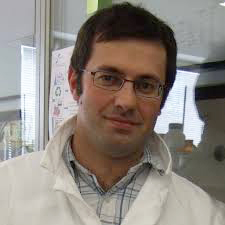
Andrey Klymchenko
ERC : Consolidator Grant 2015, Proof of Concept Grant 2020.
CNRS Bronze Medal (2010).
Founder of the startup BrightSens Diagnostics in 2021.
Polymers & Intelligent materials | Recycling
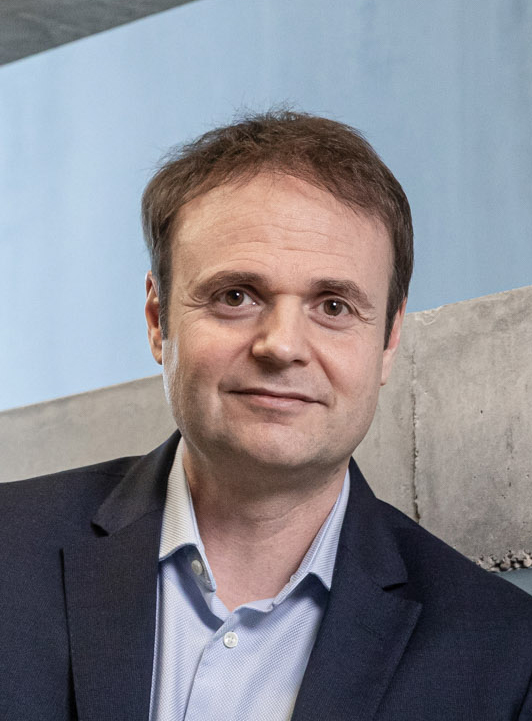
Nicolas Giuseppone
ERC Starting Grant 2010.
Director of the Materials and Nanosciences Research Federation of the Grand Est region (since 2018).
Areas of work
Thermosetting polymers that are recyclable, healing and adhesive subject to stimuli.
Nanothreads of conductive supramolecular polymers based on triarylamines.
Molecular machines :
Nature Commun. 2021, in press ; Nature Nanotech., 2017, 12, 540 ; Nature Nanotech., 2015, 10, 161 ; Nature Nanotech. 2014, 9, 331–332Materials responsive to stimuli and adaptable :
J. Am. Chem. Soc. 2020, 142, 1020 ; J. Am. Chem. Soc. 2017, 139, 3721 ; Nature Chem. 2009, 1, 649Supramolecular polymers:
J. Am. Chem. Soc. 2021, 143, 6498 ; J. Am. Chem Soc. 2020, 142, 1020 ; Nature Chem. 2012, 4, 485Competitive advantages
Synthesis of highly complex molecules.
Control of dynamic self-assembly processes.
Physics and chemistry of supra and macromolecular systems.
Revolutionary concepts in molecular machines.
Applications
Self-healing and recyclable thermosetting polymers: e.g. for construction.
Conductive supramolecular polymers: e.g. for photovoltaics.
Artificial muscles and materials based on molecular machines.
Controlled release of active molecules.
Functional materials | Data storage within the structure of material
Areas of work
Nature Chemistry 2014, 6, 455-456
Nature Communications 2019, 10:3774
C.R. Chimie 2021, 24, 69-76
Competitive advantages
Expertise in robotised synthesis and sequencing of precision polymers.
From scientific concept to commercial application with German company Polysecure GmbH.
Applications
Anti-counterfeiting.
Traceability of materials and plastics recycling.
Storage of molecular data.
Long-term information storage.
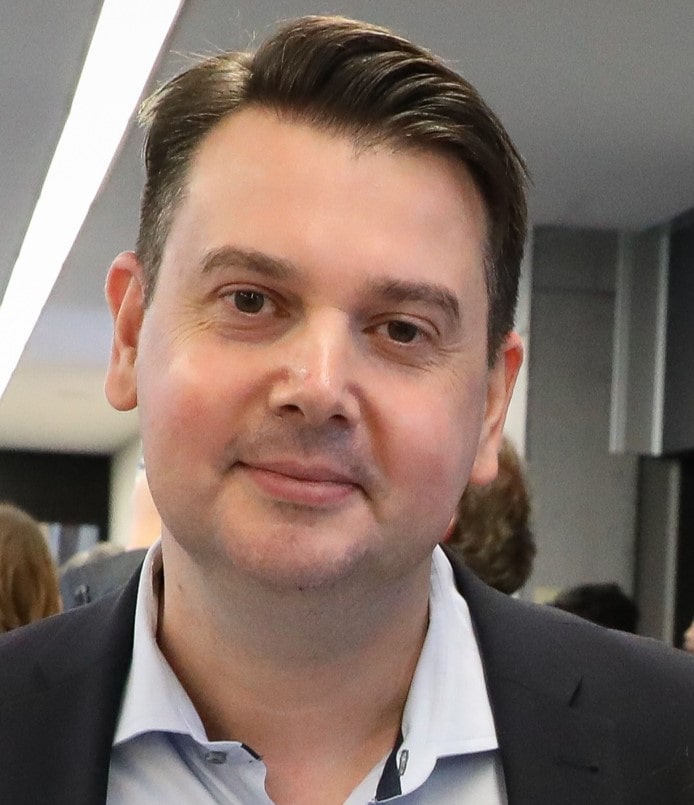
Jean François Lutz
« Highly cited researchers » 2015, among the 200 most influential chemical researchers in the world.
CNRS Silver Medal (2018).
ERC : Starting Grant 2012, & Proof of Concept 2015.
Smart materials | Multifunctional sensors and water treatment
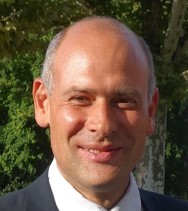
Paolo Samori
ERC : Starting Grant 2011, Advanced Grant 2020, Proof of Concept 2017 & 2019.
CNRS Silver Medal (2012).
Areas of work
2D materials as key components for waste water treatment (graphene-based membranes and adsorbents).
Self-sensing graphene-based sensors and coatings for real-time monitoring of infrastructure condition.
Ultrasensitive pressure and deformation sensors using low-dimensional materials (LDMs).
Water purification materials:
Carbon, 2020, 158, 193 J. Mater. Chem. A, 2018, 6, 9384Coating materials :
ACS Appl. Mater. Interfaces, 2021, in press ; Adv. Funct. Mater., 2021, DOI: 10.1002/adfm.202101887 ; Adv. Sci., 2019, 6, 1801195Pressure sensors :
Small, 2021, 17, 2007593 ; Angew. Chem. Int. Ed., 2020, 59, 7319 ; Adv. Mater., 2019, 31, 1804600Competitive advantages
Combining supramolecular chemistry with the capacity to develop devices.
More sensitive receivers operating at a lower voltage thanks to supramolecular chemistry.
Applications
Advanced water purification and desalination technologies.
Civil engineering: monitoring of infrastructure condition (Monitoring of stresses and deformation, detection of cracks and damage, electromagnetic armour).
Smart materials for health.
Artificial intelligence for health.
Artificial intelligence | Health applications
Areas of work
Development of artificial intelligence tools for the analysis of very large banks of molecules (several million molecules) in order to identify the few dozen that best correspond to the desired biological or therapeutic property.
Nature Scientific Reports, 2021, 11, 3178
Chem. Inf. Model., 2021, 61 , 554
Chem. Soc. Rev., 2020, 49, 3525
Chem. Inf. Model., 2019, 59, 4569
Competitive advantages
Significant expertise in screening of molecules and quality tools (For example: Generative Topographic Map GTM).
Capacity to adapt these tools to the challenges of the pharmaceutical and chemicals industry.
Applications
Health applications (researching therapeutic molecules).
Chemistry applications: prediction of new properties (useful for the improvement of batteries, for example).
Applications in Hygiene, Safety and Environment (toxicology, ecotoxicology, biodegradability, etc.).
